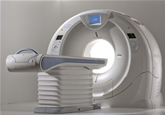
|
The data, presented at the 21st Annual International Symposium on Endovascular Therapy (ISET), showed that stents were able to open blocked brain arteries in all of the patients, and that 11 patients (69 percent) had significant improvement in their stroke symptoms. Dr. Hopkins has been a pioneer in the treatment of stroke, as well as the non-surgical therapies developed to treat both stroke and carotid disease. In an exclusive interview with Angioplasty.Org, Dr. Hopkins explains how CT scanning has been critical to correctly diagnosing a stroke on an emergency basis and directing the correct therapy. The correct therapy, in this small patient sample, included the use of stents to open blocked arteries in the brain. Since stents were first made available in the 1990's, they have been used to open arteries in the heart, legs, kidneys and neck. They are also the "gold standard" for the treatment of heart attacks -- studies have shown that a heart attack being caused by a blocked coronary artery can be stopped in its tracks, if angioplasty and/or stenting is done quickly (90 minutes is the target "window"). Now that same therapy is being applied to stroke. Current treatments for ischemic stroke include delivering clot-busting drugs to the blockage through the veins or directly into the clot through an artery, or by removing the clot with a tiny corkscrew-like device or vacuuming it out. But this early research suggests stents may work better than those treatments. Dr. Hopkins stated, "Most patients had significant improvement; for instance, they could go home rather than having to be placed in a nursing home, which is pretty dramatic. Stents seem to work when clot-busters or other mechanical devices can't." Hopkins said that clot-busting drugs only work about half the time because the blockage can be "sticky" and adhere to the vessel wall, making it difficult to break up. Stroke is sometimes referred to as a "brain attack" because blood flow and oxygen to part of the brain is cut off. About 85 percent of strokes are ischemic, meaning they're caused by a blocked blood vessel. About 700,000 people suffer an ischemic stroke every year. The remaining 15 percent of strokes are hemorrhagic and are caused by a broken blood vessel. The lack of blood flow and oxygen to the site of the stroke causes the brain tissue to die. About a quarter of people who suffer a stroke die. Another third are severely disabled and may be paralyzed or lose the ability to speak or remember. The use of computed tomography (CT) perfusion scanning has dramatically changed the treatment of strokes. As Dr. Hopkins told Angioplasty.Org in his interview:
Further studies will need to replicate the success of this small one, but the combination of CT scanning and stent placement to treat a stroke while it is occurring and prevent the debilitating symptoms and mortality associated with this event may revolutionize the treatment of the third-leading cause of death in the United States.
Reported by Burt Cohen, January 25, 2009 |

